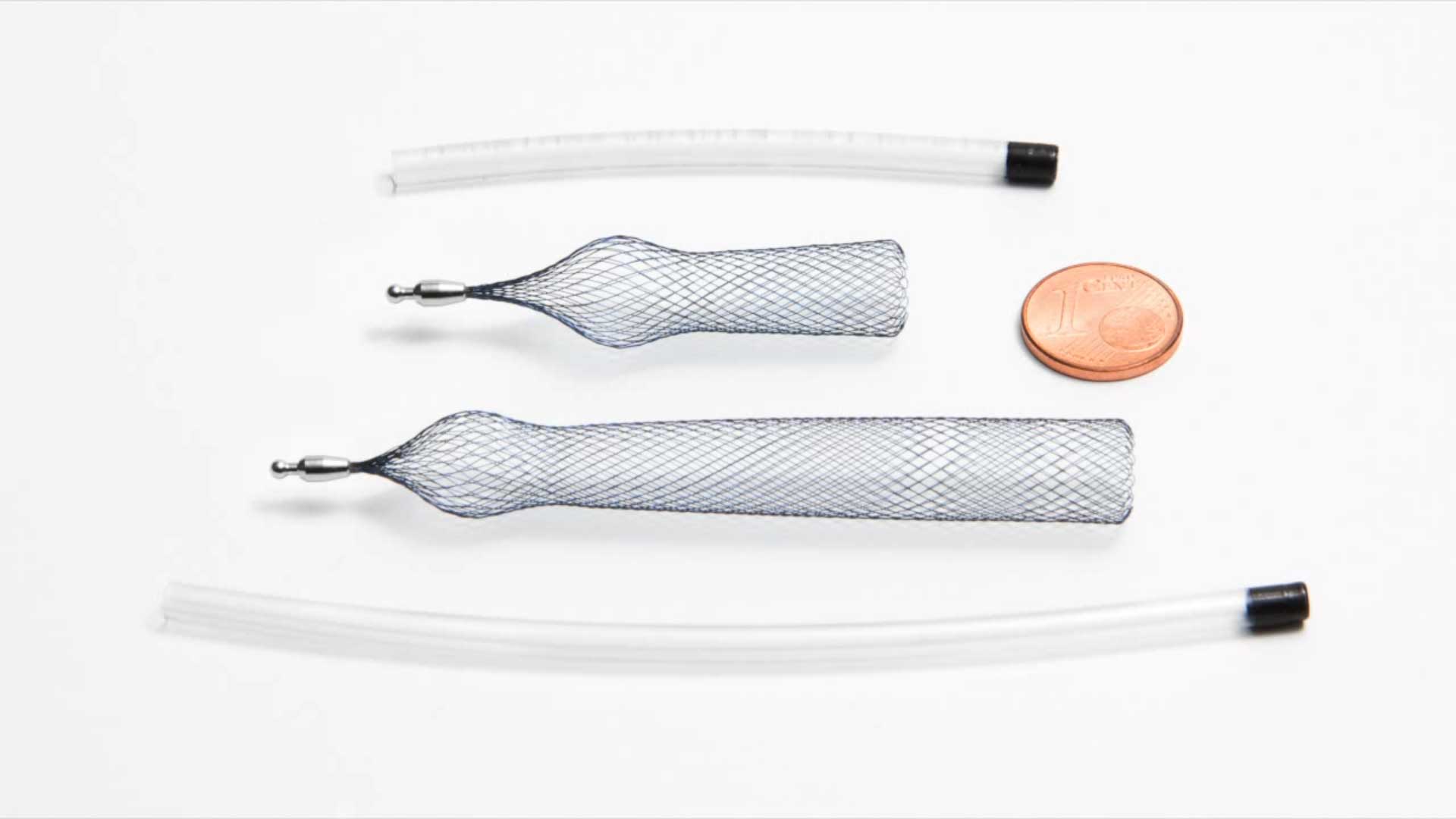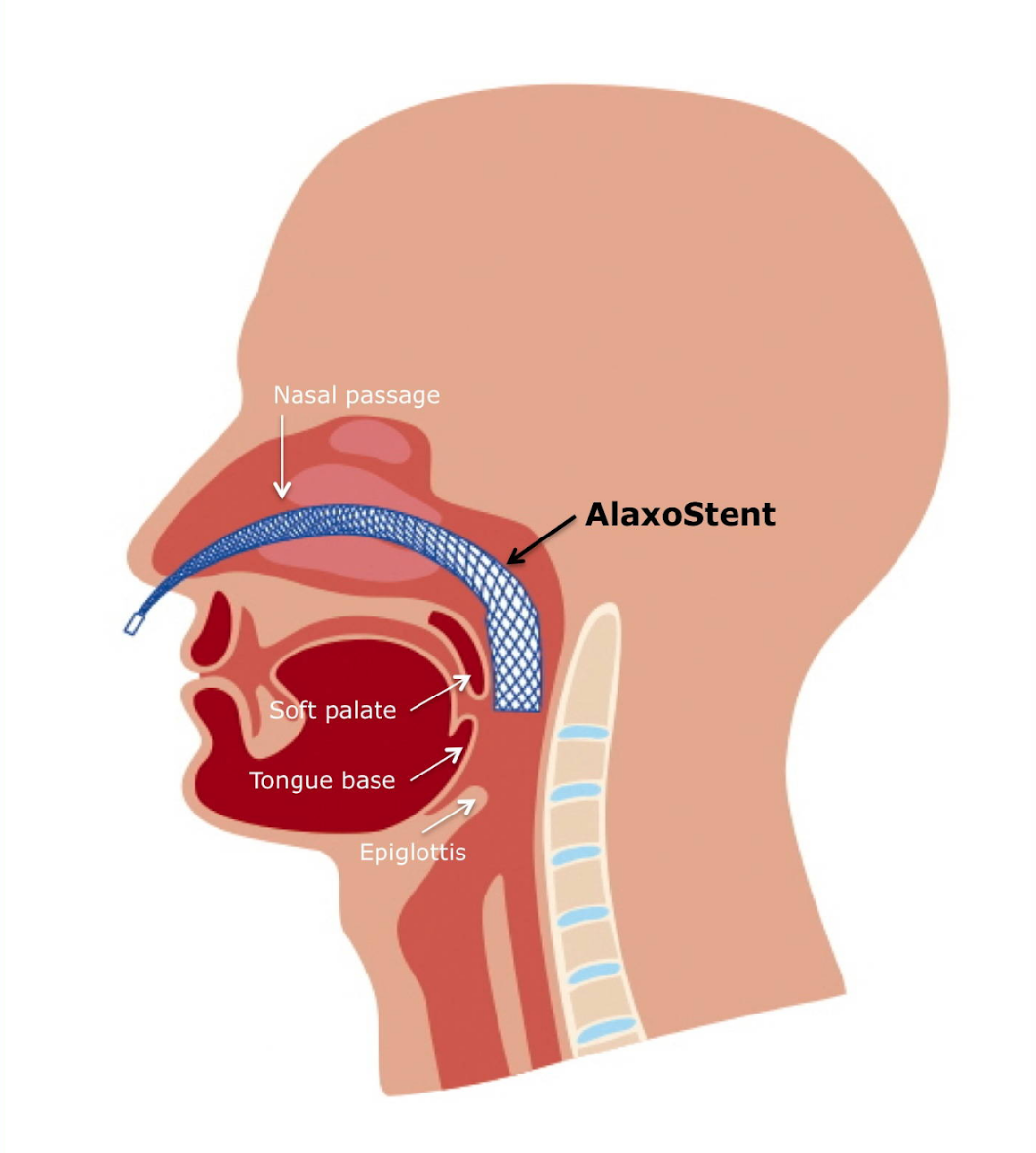How It Works
What are Airway Stents and how do they work?
Nasal Airway Stents
There are two different product lengths which splint either the
anterior nasal cavity only [2” Nasal Airway Stent] or the full length nasal
passage [3” Nasal Airway Stent and Sport Nasal Airway Stent].
The Nasal Airway Stents are medical devices indicated for the
improvement of nasal breathing. A common cause of decreased nasal
breathing is having enlarged turbinates or “turbinate hypertrophy”.
Our airway stents work to mechanically push the turbinate aside
to allow for better airflow.
Design
How It Works
Prior to insertion, the Airway Stent is pulled into the introduction tube (see Fig. 1). This is then introduced horizontally into the nose, along the floor of the nasal cavity. Once in place, remove the insertion tube to deploy the stent. The ball-shaped widening is located at the nose (see arrow in the right photo in Fig. 2). The cylindrical portion of the stent splints the anterior (2”) or the full (3”) nasal passage.
Stents are used in both the right and left nostrils. The stents are easily self-inserted by the user and the design makes the stents hardly visible in the nostrils. (see Fig. 2).
Patient Experience
The use of the Nasal Airway Stents leads to a significant improvement in nasal breathing, leading to a more relaxing sleep because of increased oxygen supply.

Fig. 1 Top 2” Nasal Airway Stent, Bottom 3” Nasal Airway Stent

Fig. 2: 2” Nasal Airway Stent and 3” Nasal Airway Stent positioned in the nose; arrow: positioning of the ball-shaped widening at the nasal alar compared to nostril without Airway Stents.
Soft Palate Stent
The Soft Palate Stent is an FDA registered medical device. It has been clinically tested to treat obstructive sleep apnea (OSA) and snoring. This medical device can be inserted by the patient into his nose and throat at night, and removed in the morning.
Design
How to use
The nitinol braid [1] is compressed into a thin tube [2] (see Fig. 3) before introduction into one nostril. This tube is then slowly introduced through one nasal passage to the throat. When released from the introduction tube, the nitinol braid expands and attaches to the wall of the throat.

Fig. 3: The two major Soft Palate Stent components: [1] nitinol braid, [2] introduction tube.

Fig. 4: Positioning of the Soft Palate Stent.
| Without Therapy | With Soft Palate Stent | With CPAP | |
| AHI | 31/h | 19/h | 8.2/h |
| Obstructive Apneas | 43.0 | 2.2 | 2.5 |
| Minimal Oxygen Saturation | 79% | 84% | 89% |
Research
Table 1: Results from ENT University Hospital of Erlangen, Germany (by Dr. Michael Hartl, MD)Learn more about how Airway Stents work.

Email info@alaxocanada.com for assistance.
Follow @airwaystents on Instagram
© 2024 Alaxo Canada Inc. | All Rights Reserved.